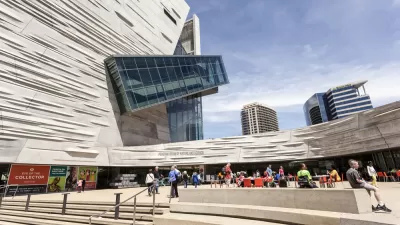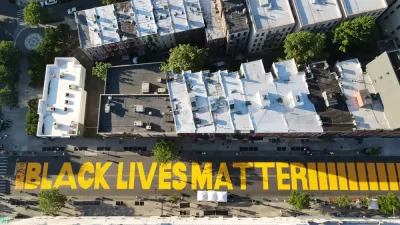An architecture critic disavows ‘gatekeeping’ in the field.

In an op-ed published in The Nation, architecture critic Kate Wagner issues a call to her peers to remember that “architecture is for everyone,” not just lofty-minded designers and critics. Moreover, all architecture is interesting in its own way.
I believe that all buildings are interesting simply because they make up the backdrop of everyday life, and in each building, from the most sacred to the most mundane, one can read and interpret the history of a given place and the values of its society, from potent religiosity to drab consumerism.
For Wagner, the “credentialism and gatekeeping” engaged in by many architecture critics and historians is “silly, and also self-defeating.” As Wagner puts it, “Many folks are bird watchers without degrees in biology.”
Wagner illustrates the difference between high-minded design and everyday reality. “An architect, who painstakingly finishes their facade with the idea that all will be unified and made whole from a long distance, is likely to be disappointed with someone growing geraniums in a railing flower box. But it is not a design failure if the building is used in this way—indeed, it is a success.” Because architecture is meant to be used, lived in, and adapted to the changing needs of those inhabiting it.
Architecture can be imposing, awe-inspiring, and innovative. But Wagner’s piece highlights the importance of remembering that it is also—almost always—ordinary, and necessarily so. “Every time you protest rising rents or living conditions, or even just inhabit the commons as a citizen, that’s participating in architecture. Every time you move, rent an apartment, renovate, or decorate, that’s participating in architecture.”
FULL STORY: Stop Gatekeeping Architecture

Study: Maui’s Plan to Convert Vacation Rentals to Long-Term Housing Could Cause Nearly $1 Billion Economic Loss
The plan would reduce visitor accommodation by 25,% resulting in 1,900 jobs lost.

North Texas Transit Leaders Tout Benefits of TOD for Growing Region
At a summit focused on transit-oriented development, policymakers discussed how North Texas’ expanded light rail system can serve as a tool for economic growth.

Using Old Oil and Gas Wells for Green Energy Storage
Penn State researchers have found that repurposing abandoned oil and gas wells for geothermal-assisted compressed-air energy storage can boost efficiency, reduce environmental risks, and support clean energy and job transitions.

Santa Barbara Could Build Housing on County Land
County supervisors moved forward a proposal to build workforce housing on two county-owned parcels.

San Mateo Formally Opposes Freeway Project
The city council will send a letter to Caltrans urging the agency to reconsider a plan to expand the 101 through the city of San Mateo.

A Bronx Community Fights to Have its Voice Heard
After organizing and giving input for decades, the community around the Kingsbridge Armory might actually see it redeveloped — and they want to continue to have a say in how it goes.
Urban Design for Planners 1: Software Tools
This six-course series explores essential urban design concepts using open source software and equips planners with the tools they need to participate fully in the urban design process.
Planning for Universal Design
Learn the tools for implementing Universal Design in planning regulations.
Ascent Environmental
Borough of Carlisle
Institute for Housing and Urban Development Studies (IHS)
City of Grandview
Harvard GSD Executive Education
Toledo-Lucas County Plan Commissions
Salt Lake City
NYU Wagner Graduate School of Public Service





























